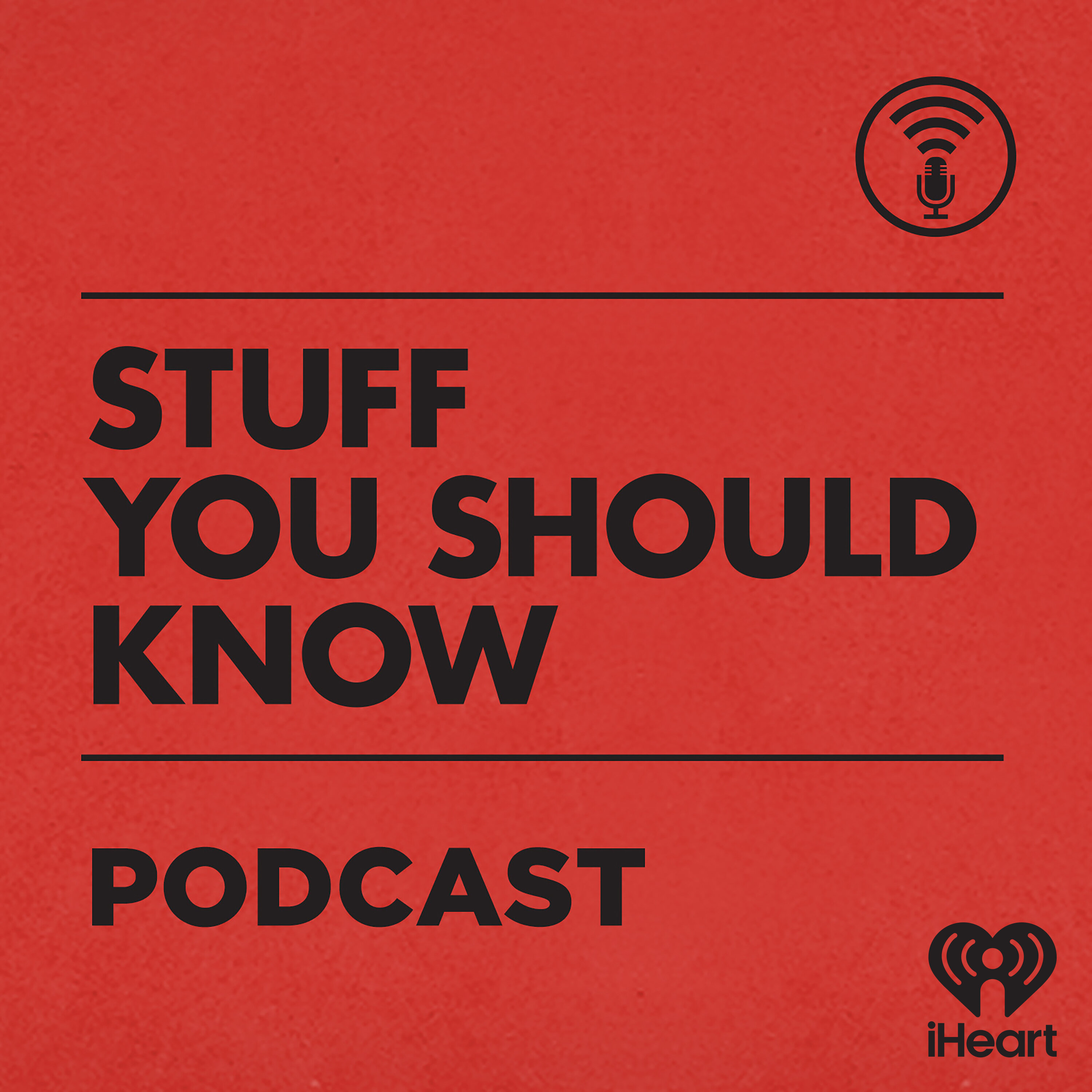Episode

Selects: How Animal Domestication Works
Description
It's strange to hear, but the transition from hunting-gathering to agriculture, including the domestication of wild animals, is the single biggest thing to ever happen to humanity. You can thank it for everything from kingdoms to Ebola. Learn all about it in this classic episode. Learn more about your ad-choices at https://www.iheartpodcastnetwork.comSee omnystudio.com/listener for privacy information.
Chapters
In this episode, Wells Adams and Tyler Florence talk about the spiciest and tastiest topics on their new podcast, Two Dudes in a Kitchen.
00:00 - 02:15 (02:15)
Summary
In this episode, Wells Adams and Tyler Florence talk about the spiciest and tastiest topics on their new podcast, Two Dudes in a Kitchen.
EpisodeSelects: How Animal Domestication Works
PodcastStuff You Should Know
The Neolithic Revolution and the transition to agriculture marked not only the domestication of animals, but also the domestication of humans themselves.
02:15 - 04:49 (02:33)
Summary
The Neolithic Revolution and the transition to agriculture marked not only the domestication of animals, but also the domestication of humans themselves. This resulted in the evolution and domestication of plants and animals, which has had a tremendous impact on society.
EpisodeSelects: How Animal Domestication Works
PodcastStuff You Should Know
The characteristics of domesticated animals have been so altered by humans that they can no longer feed themselves, contrasting with wild animals.
04:49 - 07:07 (02:18)
Summary
The characteristics of domesticated animals have been so altered by humans that they can no longer feed themselves, contrasting with wild animals. This difference can be apparent to extraterrestrial lifeforms through observing animals riding other animals.
EpisodeSelects: How Animal Domestication Works
PodcastStuff You Should Know
The evolution of domesticated animals has been shaped by human needs and desires, from riding on horses to drinking milk from cows.
07:07 - 11:11 (04:04)
Summary
The evolution of domesticated animals has been shaped by human needs and desires, from riding on horses to drinking milk from cows. Domesticated animals have adapted to human environments but may revert to a feral state if removed from them.
EpisodeSelects: How Animal Domestication Works
PodcastStuff You Should Know
The podcasters discuss the original chicken and how it has evolved over time, as well as the various uses of horses in Mongolian culture.
11:11 - 16:12 (05:01)
Summary
The podcasters discuss the original chicken and how it has evolved over time, as well as the various uses of horses in Mongolian culture.
EpisodeSelects: How Animal Domestication Works
PodcastStuff You Should Know
The podcast explores how animals have been tied and revered by humans for centuries, with evidence found in burials, mummification, and art, to the current status of domesticated animals such as dogs and sheep.
16:12 - 21:46 (05:34)
Summary
The podcast explores how animals have been tied and revered by humans for centuries, with evidence found in burials, mummification, and art, to the current status of domesticated animals such as dogs and sheep.
EpisodeSelects: How Animal Domestication Works
PodcastStuff You Should Know
Agriculture was a means for tribes to conquer other tribes and assert authority in society.
21:46 - 26:46 (04:59)
Summary
Agriculture was a means for tribes to conquer other tribes and assert authority in society. The domestication of cattle created a revolution and led to certain societies even abandoning the use of the wheel.
EpisodeSelects: How Animal Domestication Works
PodcastStuff You Should Know
This episode delves into the genetic changes that happen when animals are domesticated, with certain traits being linked to genes that turn wild species tame, and outward signs like floppy ears indicating a coolness towards humans.
26:46 - 31:05 (04:19)
Summary
This episode delves into the genetic changes that happen when animals are domesticated, with certain traits being linked to genes that turn wild species tame, and outward signs like floppy ears indicating a coolness towards humans.
EpisodeSelects: How Animal Domestication Works
PodcastStuff You Should Know
Dogs are believed to have diverged from or descended from wolves a hundred thousand years ago, but it was only until 15,000 years ago when significant morphological changes started to occur.
31:05 - 37:49 (06:44)
Summary
Dogs are believed to have diverged from or descended from wolves a hundred thousand years ago, but it was only until 15,000 years ago when significant morphological changes started to occur. Women in Ancient Rome had the first evidence of little lap dogs, which supposedly cured stomach aches.
EpisodeSelects: How Animal Domestication Works
PodcastStuff You Should Know
Discover the wild cats that were domesticated into the house cats we know today, and the reasons behind the domestication of pigs from wild boars.
37:49 - 43:57 (06:07)
Summary
Discover the wild cats that were domesticated into the house cats we know today, and the reasons behind the domestication of pigs from wild boars.
EpisodeSelects: How Animal Domestication Works
PodcastStuff You Should Know
The domestication of bees allowed for the cultivation of crops like almonds and the use of animals for transportation and labor accelerated the agricultural revolution and trade.
43:57 - 47:23 (03:26)
Summary
The domestication of bees allowed for the cultivation of crops like almonds and the use of animals for transportation and labor accelerated the agricultural revolution and trade.
EpisodeSelects: How Animal Domestication Works
PodcastStuff You Should Know
The agricultural revolution brought epidemic diseases that originated from domesticated animals which caused damage to humans.
47:23 - 51:04 (03:40)
Summary
The agricultural revolution brought epidemic diseases that originated from domesticated animals which caused damage to humans. Eurasians developed resistance and immunity over the generations to these diseases.
EpisodeSelects: How Animal Domestication Works
PodcastStuff You Should Know
A family under 30 with over the air TV was invited to join a TV viewing habits tracking program that sent representatives to their house every six months.
51:04 - 54:39 (03:35)
Summary
A family under 30 with over the air TV was invited to join a TV viewing habits tracking program that sent representatives to their house every six months. The family was offered a year-long extension after their initial two-year participation ended.